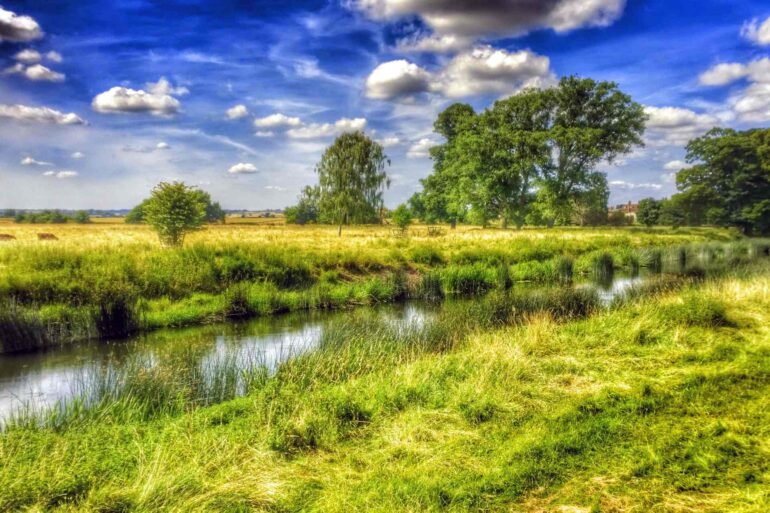The State of Biodiversity in Avon: Getting Ready for BNG
- Jackie De Burca
- June 11, 2023
The State of Biodiversity in Avon: Getting Ready for BNG
Biodiversity in Avon, England has been threatened for years, with urbanization, farming, and pollution affecting the area’s natural habitats. However, there is hope in the efforts made by the Avon Wildlife Trust and other organizations to preserve and restore these environments.

Below you can hear our legal expert in a recent podcast episode:
You may also enjoy listening to the Immediate Past President of the Landscape Institute, Jane Findlay
With the Biodiversity Net Gain (BNG) policy coming into effect, the region is preparing to enhance its natural spaces and create more opportunities for wildlife to flourish.
One of the main initiatives taken by the Avon Wildlife Trust is rewilding. This involves restoring habitats to their natural state and reintroducing native species that have been displaced.
Avon’s grasslands, for example, have been impacted by decades of intensive farming, but rewilding efforts aim to re-establish the diversity of plant and animal life that once thrived in these areas.
Another key strategy for preserving biodiversity in Avon is creating a network for pollinators. Insects such as bees play a vital role in pollinating crops and flowers, but their numbers have been decreasing in recent years due to pesticide use and lack of suitable habitats.
By creating a connected network of habitats that support pollinators, the Avon Wildlife Trust hopes to help these vital species thrive.
Biodiversity recovery is also a significant focus for the region.
By restoring and protecting natural habitats, wildlife such as birds, insects, and mammals can flourish, and the area can become an ecological haven. The Avon Wildlife Trust is working with landowners, communities, and businesses to create more opportunities for biodiversity recovery, including wildlife corridors and habitat restoration projects.
Clean water in the River Avon is also crucial for the health of the region’s wildlife. Pollution from farming and industry, as well as urban runoff, have caused issues with water quality in the past. However, efforts are being made to improve water quality by controlling pollution and restoring river habitats.
The goal of net-zero farming by 2040 is essential for preserving biodiversity in Avon.
This means that farming practices must be changed to reduce carbon emissions and restore habitats that support wildlife. By adopting sustainable farming techniques that aim to work with nature rather than against it, farmers can help to preserve the region’s biodiversity, while also ensuring future food security.
Economic Benefits of Stratford-upon-Avon Biodiversity Project
The Southam industrial scheme is set to benefit the Stratford-upon-Avon biodiversity project, a major conservation effort in the Warwickshire area of England. The project aims to improve the area’s biodiversity by creating new habitats for wildlife and restoring natural habitats.
The scheme will see £1.6m invested into the project, with the funds used to create a number of new habitats for animals, plants, and insects. This investment will also facilitate the restoration of existing habitats and provide educational programs for local schools and communities. The project seeks to promote the awareness of conservation and environmental protection, as well as encouraging people to value the natural environment.
The project will also benefit the local economy. The investment into the project will create jobs for local people, as well as providing businesses with opportunities for growth and development. The project will also help to boost tourism in the area, as visitors will be attracted to the new habitats and the natural beauty of the area. This will create more opportunities for businesses in the area, as well as providing income for local people.
By investing in the Stratford-upon-Avon biodiversity project, the Southam industrial scheme is demonstrating its commitment to environmental protection and conservation. It is hoped that this investment will help to create a better future for the area and its inhabitants.
Green Living in Bradford-on-Avon: Creating a Unique Living Wall
Residents of Bradford-on-Avon in the United Kingdom are taking green living to an impressive new level. In an effort to improve air quality and introduce more green spaces to the city, the residents have collaborated to create a stunning living wall.
The wall, which is made of a variety of plant species, stretches for over 200 meters and is taller than 9 meters in some places. The project was created by local business owners and members of the community who wanted to introduce a greening project to the city. The wall is not just aesthetically pleasing, but also has the benefit of absorbing pollutants and reducing urban heat.

The project has been a huge community effort and has been completed in stages over the past four years. It has involved the local council, schools, and numerous volunteers who have planted and cared for the wall. It is now home to a variety of plant species including ivy, ferns, and heuchera, and is a popular spot for visitors to the city.
In conclusion, biodiversity in Avon, England, is vital and must be protected. The Avon Wildlife Trust and other organizations are doing essential work to preserve and restore natural habitats, creating opportunities for pollinators, supporting biodiversity recovery, ensuring clean water, and promoting sustainable farming practices. The upcoming BNG policy will act as a catalyst for these efforts, ensuring that Avon becomes a model for biodiversity preservation and restoration in the UK.
You may like to check out Biodiversity in the Built Environment








